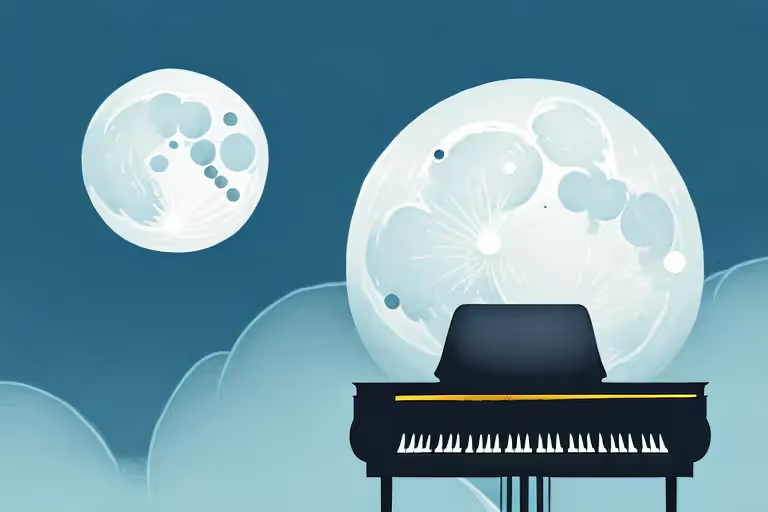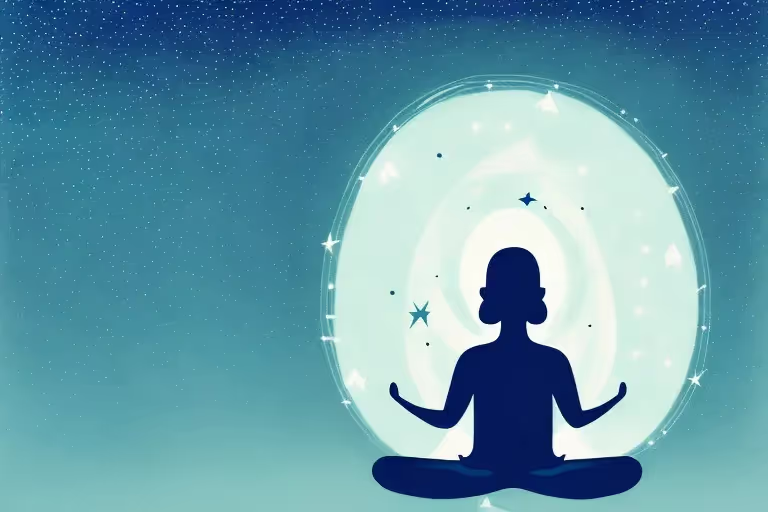The world of classical music is full of timeless masterpieces that have stood the test of time, but few can compare to the sheer beauty and emotional power of Beethoven's Moonlight Sonata. This breathtaking composition has captured the hearts of audiences for centuries, inspiring countless musicians and listeners alike. In this article, we will explore the origins, emotional impact, and influence of this unforgettable piece.
The Origins of Moonlight Sonata
Beethoven's Moonlight Sonata, also known as Piano Sonata No. 14 in C-sharp minor, was composed in 1801 and published in 1802. Despite being one of Beethoven's most beloved works, it was not initially well-received by the public. In fact, the name "Moonlight Sonata" was not given to the piece by Beethoven himself, but was added by a German music critic several years after its release.
It is said that Beethoven was inspired to write this piece by a moonlit walk he took one night. The serene and calming atmosphere of the moonlit night is reflected in the melody of the first movement of the sonata. The piece is known for its hauntingly beautiful melody and gentle, flowing rhythm that evokes a sense of moonlit stillness and melancholic beauty.
Beethoven's Inspiration for the Piece
The precise inspiration for Moonlight Sonata is not known, but it is widely believed that Beethoven was inspired by his own personal struggles and emotions. At the time of the composition, Beethoven was known to be struggling with his hearing loss and other personal challenges.
As with many of his works, Moonlight Sonata is believed to reflect Beethoven's innermost feelings and emotions, serving as a powerful vehicle for his personal expression and catharsis.
It is said that the second movement of the piece was inspired by a dream that Beethoven had. In the dream, he saw a group of spirits dancing and playing music. The playful and energetic scherzo that is the second movement of the sonata is said to evoke a sense of youthful vitality, reflecting the joy and exuberance of the spirits in Beethoven's dream.
The Composition's Unique Structure
One of the most remarkable aspects of Moonlight Sonata is its unique structure, which defied the conventions of sonata form at the time of its creation. The piece is divided into three movements, each with its own distinctive mood and character.
The first movement, Adagio sostenuto, is known for its hauntingly beautiful melody and gentle, flowing rhythm. The second movement, Allegretto, is a playful and energetic scherzo that evokes a sense of youthful vitality. And the final movement, Presto agitato, is an intense and virtuosic display of Beethoven's technical prowess and emotional depth.
It is interesting to note that the third movement of the piece was initially criticized by some as being too "noisy" and "unmusical". However, over time it has come to be recognized as a masterpiece of Beethoven's genius, showcasing his ability to push the boundaries of what was considered acceptable in classical music.
Overall, Moonlight Sonata remains one of Beethoven's most enduring and beloved works, continuing to captivate audiences with its haunting beauty and emotional depth.
The Emotional Impact of Moonlight Sonata
One of the most powerful aspects of Moonlight Sonata is its ability to stir up deep, intense emotions in listeners. The range of emotions that the piece can elicit is truly astonishing, from a sense of peaceful calm to outright intensity and passion.
As the first notes of the Adagio sostenuto movement begin to play, listeners are transported to a world of pure emotion. The gentle, rolling melody and poignant harmonies can evoke a sense of serenity and peace, allowing the listener to fully immerse themselves in the beauty of the music.
But as the music progresses, the emotions become more complex and intense. The Allegretto movement is full of playful, dancing energy that can make the listener feel as though they are being swept away by the music. The Presto agitato movement, on the other hand, is a tour-de-force of technical virtuosity and pure emotion. Its rapid-fire notes and intense harmonies create a sense of emotional intensity and release that is truly unmatched in the world of classical music.
The Power of the Adagio Sostenuto Movement
It is no wonder that the Adagio sostenuto movement is widely considered to be one of the most beautiful and moving pieces of music ever composed. Its power lies in its simplicity and subtlety, allowing the listener to fully immerse themselves in the beauty of the music.
As the melody unfolds, listeners may find themselves feeling a sense of peace and calm wash over them. The gentle, rolling notes can create a feeling of weightlessness, as though the listener is floating on a cloud of pure emotion.
But as the movement progresses, the emotions become more complex and nuanced. The harmonies become more intricate, and the melody becomes more intense. By the end of the movement, listeners may find themselves feeling a sense of emotional release, as though they have been through a transformative experience.
The Intensity of the Allegretto and Presto Agitato Movements
While the Adagio sostenuto movement is known for its beauty and serenity, the Allegretto and Presto agitato movements are marked by their intensity and emotional depth.
The Allegretto movement is full of playful, dancing energy that can make the listener feel as though they are being swept away by the music. The melody is light and airy, with a sense of joy and playfulness that is infectious.
But it is the Presto agitato movement that truly showcases Beethoven's talents as a composer. Its rapid-fire notes and intense harmonies create a sense of emotional intensity and release that is truly unmatched in the world of classical music.
As the music builds to its climax, listeners may find themselves feeling a sense of emotional release, as though they have been through a transformative experience. The Presto agitato movement is a true tour-de-force of emotion and technical virtuosity, and it is no wonder that it has become one of the most beloved pieces of classical music in the world.
The Influence of Moonlight Sonata on Classical Music
The impact of Beethoven's Moonlight Sonata extends far beyond its own time period, continuing to inspire and captivate musicians to this day. The sonata's hauntingly beautiful melody and intricate harmonies have left an indelible mark on the world of classical music.
The Sonata's Role in the Romantic Era
During the Romantic era of music, which spanned from the early 19th century to the early 20th century, Moonlight Sonata played a pivotal role in shaping the direction of the genre. Its use of intense emotional expression and personal storytelling helped to pave the way for composers such as Chopin, Schumann, and Liszt to push the boundaries of classical music even further.
The Romantic era was a time of great artistic and cultural change. It was marked by a renewed interest in individualism, emotion, and the supernatural. Beethoven's Moonlight Sonata perfectly captured the spirit of this era, with its deeply personal and introspective themes.
The sonata's first movement, with its mournful melody and gentle, rolling arpeggios, is a prime example of Beethoven's ability to convey deep emotion through music. The second movement, with its delicate, almost fragile melody, is a stark contrast to the first, yet equally powerful in its own right. The final movement, with its frenetic energy and technical virtuosity, is a testament to Beethoven's mastery of the piano and his ability to create music that is both technically challenging and emotionally moving.
The Legacy of Beethoven's Masterpiece
Today, Moonlight Sonata remains one of the most beloved and widely performed works of classical music. Its enduring influence on the genre cannot be overstated, and its beauty and emotional power continue to captivate new generations of listeners.
Many modern musicians continue to be inspired by Moonlight Sonata and its impact on the world of classical music. Its influence can be heard in everything from contemporary classical music to popular film scores. The sonata has been covered by countless musicians and has been featured in numerous films, television shows, and commercials.
Despite being over 200 years old, Beethoven's Moonlight Sonata remains a timeless masterpiece that continues to inspire and move audiences around the world. Its legacy is a testament to the power of music to connect us across time and space.
Famous Performances and Interpretations
Over the years, countless musicians have put their own unique spin on Beethoven's Moonlight Sonata, bringing their own personal interpretations and styles to the piece.
Iconic Pianists and Their Renditions
Some of the most iconic performances of Moonlight Sonata have come from legendary pianists such as Arthur Rubinstein, Vladimir Horowitz, and Glenn Gould, all of whom brought their own unique interpretation and virtuosity to the piece.
The Evolution of Moonlight Sonata Performances
As music has evolved over time, so too have the way in which musicians approach and perform Moonlight Sonata. From traditional classical interpretations to modern interpretations that incorporate elements of jazz, rock, and electronic music, the piece continues to inspire musicians to experiment and innovate.
Learning to Play Moonlight Sonata
If you are a pianist looking to master Beethoven's Moonlight Sonata, there are a few important tips and techniques to keep in mind.
Tips for Mastering the Piece
First and foremost, it is important to approach the piece with a sense of emotional depth and intensity. Moonlight Sonata is a deeply expressive piece that requires musicians to connect with their own emotions and convey them through their playing.
Secondly, it is important to work on technical proficiency, particularly in the lightning-fast runs and intricate rhythms of the Presto agitato movement.
The Importance of Emotion and Expression in Performance
Ultimately, the key to mastering Moonlight Sonata lies in one's ability to connect with the emotional depth and power of the piece, and to convey that emotion through their playing. By embracing the beauty and power of this timeless masterpiece, musicians can tap into a sense of creative inspiration and emotional transcendence that is truly unparalleled.
Aura is Your All In One App for Meditation, Mindfulness Wellbeing
Find peace every day with one app for your whole well-being. There is no one-size-fits-all solution to mental well-being. Aura is the first all-in-one wellness app that learns how to best help you. Discover an endless library of expert-created tracks for your well-being, all taught by the world’s best coaches, therapists, and storytellers. With Aura's personalized recommendations, you can find peace every morning, day and night.



.webp)






.avif)

%20(1).avif)


.avif)
.avif)
.webp)


.avif)


















































































































.avif)

















.svg)









